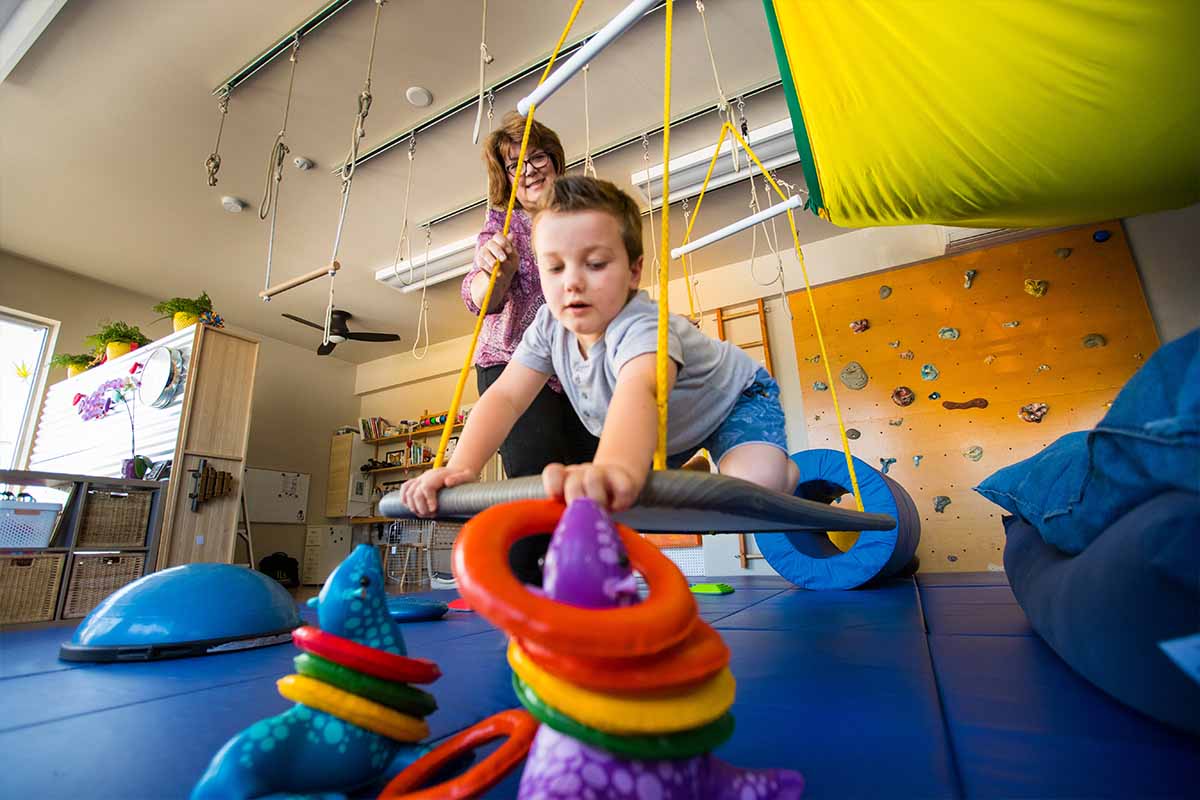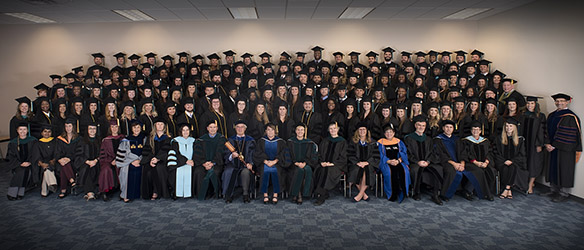
When OTD student Shaina Rooney was first introduced to the 3D printer in her Assistive Technology class, “I loved it,” she says. “I saw the potential. 3D printers are new tools that occupational therapists can use to create an endless number of interventions for patients.”
For example, they can print orthoses, assistive devices, home improvement devices, toys for pediatric patients—the list goes on. And the cost of making objects is incredibly low.
However, Rooney, a student on the USAHS campus in St. Augustine, Florida, noticed that some of her classmates were intimidated by the large and seemingly complicated machines. “The fear of 3D printers can take over therapists’ desire to use them,” Rooney says. “Also, they may not understand the benefits.”
So when it came time to choose a topic for her capstone project in the Doctor of Occupational Therapy (OTD) program, she decided to teach her peers and working therapists about the 3D printer—through TikTok.
TikTok for Training
“We thought TikTok would be a good way to reach USA students,” she says. “Fifty percent of TikTok users are under age 35.” She brainstormed this idea with her mentor, Elisabeth McGee, PhD, DPT, MOT, the University’s Senior Director of Clinical Learning and Innovation.
@3dprintusahs This video shows the prints made this term. The assistive devices were made by our 3rd term students! There are also tracheas, larynxes, and bones that were printed as visual aids for learning #3dprinting #otstudent ♬ Safe And Sound – Capital Cities
Rooney made 12 TikTok videos, covering topics like step-by-step instructions, troubleshooting, and student-made objects—all with humor and fun music. “It’s hard to make TikToks—syncing the music and condensing everything into less than a minute,” she says. “You have to keep them trending. I made some practical TikToks and a couple funny ones to be trendy and relevant. The stuff you put on there, a lot of people are looking at.”
In the TikToks, Rooney shows the fundamentals:
- Downloading printer files from a source like MakerBot Thingiverse
- Manipulating the object’s design on Simplify3D
- Transferring the files to the printer via USB
- Turning on the printer
- Changing the polymer filament
- Troubleshooting, such as fixing jams
- Removing the finished object from the printer
@3dprintusahs There are so many different items that can be printed with a 3D printer-can you think of other ones? #3dprinting #occupationaltherapy ♬ Forever – Labrinth
Making Objects in Class
To begin her capstone project, Rooney conducted a needs assessment by surveying occupational therapy students about their comfort level with the printer. “We used the survey data to customize student-led 3D printing trainings, support sessions, and open lab opportunities for students to brainstorm and print in creative learning spaces,” says Dr. McGee. “Shaina collaborated with myself, the CICP staff, Dr. Lydia Kite, and Dr. Kite’s students in the OT Methods II: Assistive Technology course to design and manufacture 3D-printed therapeutic and functional tools for course projects.” With the support of her collaborators, Shaina:
- Created printed and downloadable manuals for how to use the Fusion 400 and 410 printers, both of which are used on the St. Augustine campus.
- Gave presentations to the Assistive Technology course (both Residential and Flex) on the steps to print an assistive can opener. The Flex class built the device on Tinkercad, a simplified CAD program, and used it to open soda cans.
- Led a class in which students read case studies of patients, found assistive devices online that could help each patient, and printed them out.
- Printed an extra-large scapula and humerus for a physical therapy class to use as bone models.
- Helped to print out larynx models in bulk for the speech-language pathology students on the Austin campus.
Rooney learned how to troubleshoot the Fusion 3D printer after she ran into hiccups, such as filament clogs, using the wrong type of filament, and running out of filament. She also had to figure out the best kind of removable supports for the printed object. “But the more I used it, the more it felt comparable to an office printer,” she says.
@3dprintusahs Our #UofStAug #otstudents having fun while learning how to use the #3dprinter during #AT class in the #CICP ♬ sonido original – mayuuuniii
“The students can’t get enough of 3D printing,” says Dr. McGee. “It’s a tool that is transforming healthcare. It allows students to invent client-centered equipment and tools that optimize functional independence.”
Seeing the Change
“At first, I saw the students’ hesitancy and standoffishness,” Rooney says. “But when they started touching the equipment and the printouts, they started feeling more confident. And once they made something, they got really excited. They understood how affordable and practical 3D printing is.”
After the initial capital investment in the printer is made, it’s possible to print models, devices, and toys for pennies. Says Rooney’s classmate Ashley May, OTD, “I would not have been able to do part of my capstone project without the 3D printer. One model cost five hundred dollars—but Shaina made four of them for four dollars.”
“If you can think it, you can print it,” Rooney says. “Researchers are 3D-printing parts of organs with stem-cell like material and conducting pharmacological testing on them. You can even print a house. It’s good for supply chain issues, like shortages of PPE.”
In the future, students participating in USAHS pro bono clinics could use it to make devices for patients. Rooney also hopes to inspire graduates to advocate for 3D printers in their workplaces. “It’s coming,” says Rooney. “I see this machine being used in every facet of an OT’s work. Using the machine helps OTs come up with more creative interventions.”
Rooney graduated with her OTD degree in April. During her project, she also worked with the 3D scanner and got a chance to help with the Oculus, preparing virtual reality environments for students to walk through. “USA creates an exceptional student experience by offering so many different resources to help us learn,” Rooney says.
The University of St. Augustine for Health Sciences (USAHS) offers hands-on Master of Occupational Therapy(MOT) and Doctor of Occupational Therapy (OTD) degrees. Join a collaborative cohort of peers who learn under the mentorship of expert faculty-practitioners. Practice with mock patients in our state-of-the-art simulation centers and learn anatomy with our high-tech tools. Prepare for clinical practice with patients across the lifespan. The OTD program includes a capstone project and additional coursework in practice leadership and policymaking. Residential (online coursework + in-person labs on weekdays) and Flex (online coursework + in-person labs on weekends)formats are available.
The entry-level occupational therapy master’s degree (MOT) programs on the San Marcos, California; St. Augustine and Miami, Florida; and Austin, Texas, campuses and the entry-level occupational therapy doctoral degree (OTD) programs on the San Marcos, California; St. Augustine and Miami, Florida; Austin and Dallas, Texas, campuses are accredited by the Accreditation Council for Occupational Therapy Education (ACOTE) of the American Occupational Therapy Association (AOTA), located at 6116 Executive Boulevard, Suite 200, North Bethesda, MD 20852-4929. ACOTE’s telephone number c/o AOTA is 301-652-AOTA, and its web address is www.acoteonline.org. Visit USAHS MOT Accreditation and OTD Accreditation for more information.







